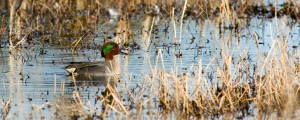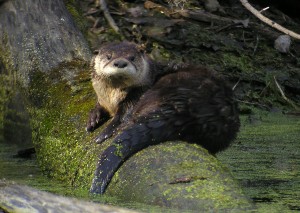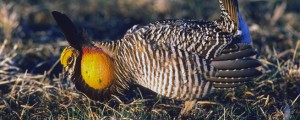
Hunters can expect good hunting conditions that will only improve with time.
The makings for a great waterfowl season are all coming together as hunters prepare for early teal. Expertly-managed food, water, and refuge areas at public wildlife areas across the state have already drawn in thousands of the blue-winged teal, and the best part is, it will only get better. The 2014 teal season will begin with the Low Plains Zone, (anything east of U.S. Highway 283) Sept. 13-28, followed by the High Plains Zone (anything west of U.S. Highway 283) Sept. 20-28. The daily bag limit is six teal.
All hunters participating in teal season who are required to have a hunting license must also possess a Kansas HIP permit and State Waterfowl Permit. All hunters 16 and older must have a Federal Waterfowl Stamp. Kansas HIP permits and State Waterfowl Permits can be purchased online at ksoutdoors.com, and Federal Waterfowl Stamps can be purchased at your local U.S. Post Office and Kansas Department of Wildlife, Parks, and Tourism regional offices.
For those hitting the marsh this teal opener, compiled below is a brief report from Kansas Department of Wildlife, Parks and Tourism (KDWPT) wildlife area managers at some of the state’s best waterfowl locations. For a complete list of where to hunt waterfowl in Kansas, visit ksoutdoors.com and click “Hunting/Where to Hunt in Kansas.” For up-to-date information on waterfowl numbers, click on “Weekly Waterfowl Reports.”
Cheyenne Bottoms Wildlife Area
“Current water conditions at Cheyenne Bottoms are excellent,” said Cheyenne Bottoms wildlife area manager, Karl Grover. “Hunters can expect good natural food production for ducks, such as millets, smartweed and bulrushes. And blue-winged teal migration is underway as we are beginning to see indications of new birds on the area. We estimate teal numbers to be about 10,000-15,000 right now.”
Grover added the pools closed to motorized watercraft are 13 inches to accommodate the walk-in hunter, and all other hunting pools are 16-21 inches. Hunter numbers are expected to be above average, especially on weekends, so hunters should plan ahead and arrive early.
Jamestown Wildlife Area
According to Jamestown wildlife area manager, Rob Unruh, Jamestown water conditions are perfect for teal.
“Nearly all pools have water ranging from a few inches to 18 inches and all Jamestown marshes have great moist soil vegetation with lots of food available,” said Unruh. “Hunters can expect to find a lot of excellent habitat conditions scattered throughout the area, giving hunters many options on where to hunt. Scouting prior to the hunt is always the best but traditional hotspots will be really good this year.”
Unruh added that teal numbers are increasing daily with 1,000-3,000 teal using the area now.
Marais des Cygnes Wildlife Area
“Recent rains provided some water in a few units, but conditions will remain only fair at Marais des Cygnes unless we get more runoff rain,” said wildlife area manager Karl Karrow. “I have yet to observe any teal, but that can change with more rain. For now, hunting Marais des Cygnes Wildlife Area is predicted to only be fair,” added Karrow.
Neosho Wildlife Area
Monte Manbeck, Neosho Wildlife Area manager, says habitat conditions at Neosho are good for teal, but he expects them to get better with time. “Currently, there are approximately 250 teal using the area,” said Manbeck. “The refuge pool is about three foot low with mud flats and shallow water areas that teal will absolutely love.”
“Hunting pools 1 and 2 both have water, but the vegetation is tall and will be hard to hunt,” said Manbeck. “The water transfer ditches in both pools 1 and 2 will have open water and will be available to hunt during teal season, and there is a deeper portion of Pool 2 called the Oxbow that has open water and could provide some hunting opportunity, as well.” Manbeck added there is very limited space for hunting, so hunters are encouraged to be careful and respectful of other hunters.
For information on migratory bird regulations, visit www.ksoutdoors.com and click “Hunting / Migratory Birds.”





